4K 120Hz gaming: What is it? Do you need it? How do you get it?
What is 4K 120Hz gaming? And why should you be excited about it?
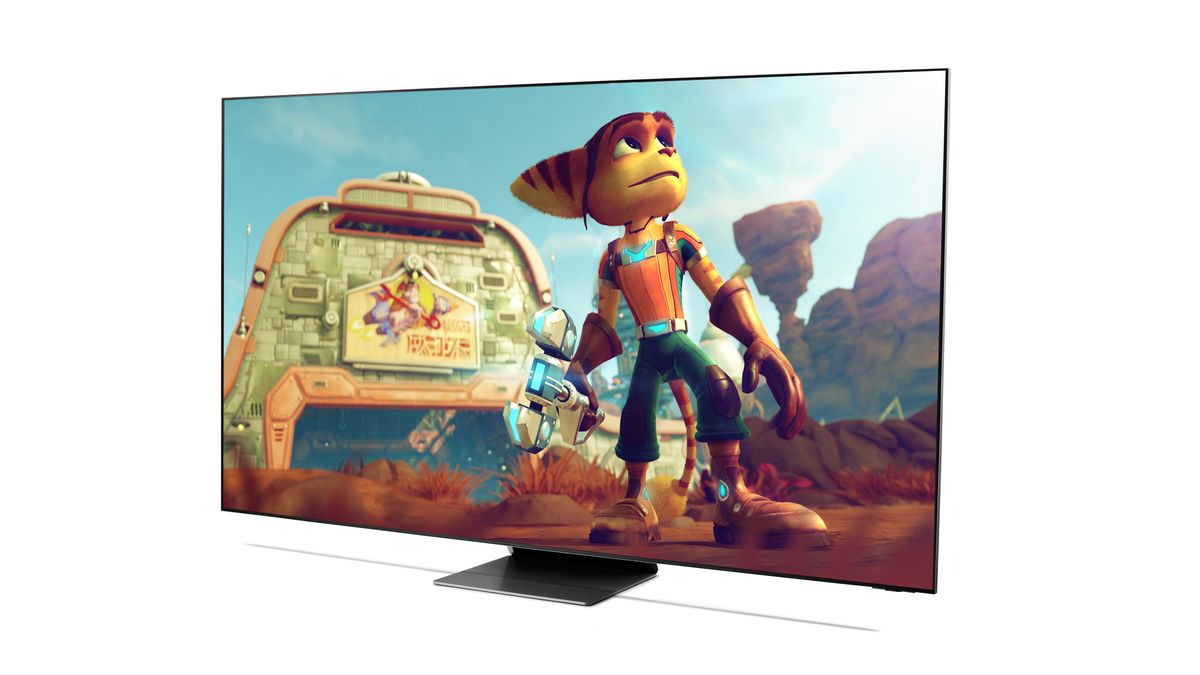
The latest generation of consoles and high-end PC cards have introduced all manner of gaming and graphics improvements both big and small, many of which have already been used to gorgeous effect to create truly next-gen gaming experiences.
Two improvements in particular, though, have really stood out – partly because of just how much impact they have on the gaming experience, and partly because of the burden of compatibility they place on TVs and displays.
Those cutting edge features are Variable Refresh Rate (VRR) and 4K 120Hz (aka 4K/120, 4K@120Hz etc). We’ve looked at VRR already in this separate article, so here we turn our attention to 4K 120Hz.
What is 4K 120Hz?

We’re all pretty familiar now with the first part of the 4K 120Hz proposition. TVs with native 4K resolutions (3840 x 2160 pixels) completely dominate today’s market, and the 4K terminology has caught on with consumers much more than the alternative ‘UHD’ moniker.
Gaming in native 4K can obviously deliver more detailed and immersive worlds, even on relatively small displays, given that a) gamers often sit nearer to their screens than regular TV watchers do, and b) having so many pixels in a small area results in reduced pixel pitch, leading to a denser, less pixellated finish.
Delivering games in native 4K resolutions, though, doesn’t just put considerably more pressure on a console or PC’s processors than HD does. It also puts far more pressure on the HDMI connections used to connect consoles and PCs to displays. This is something we’ll come back to later.
The 120 part of 4K 120Hz refers to the refresh rate of the TV. A TV with a 120Hz refresh rate can display a new image 120 times per second. Combine that with a device that can output 120 individual frames per second (fps) and you've got graphics that look much smoother as you pan around environments, and objects that pass across the screen do so much more fluidly.
The difference between 120Hz/fps and 60Hz/fps (the previous maximum) is mesmerisingly obvious, instantly making gaming worlds feel more immediate and immersive. Playing competitive reaction-based games such as Call Of Duty or Dirt 5 in 120Hz, though, also makes you realise how much extra precision you can achieve with so much extra fluidity at your disposal. Nothing gets lost between this many frames.
Delivering 120Hz refresh rates, though, joins 4K in greatly increasing the burden on both a gaming device’s processor and the connection between the console/PC and your display. Which brings us to the big problem with 4K 120Hz gaming when it comes to many of today’s TVs and displays: even if the panel can refresh at 120Hz, the HDMI ports often don’t have enough data bandwidth to support it.
Which consoles support 4K 120Hz?
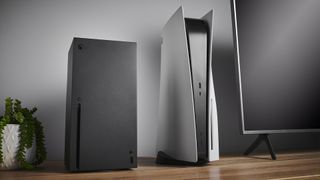
Both the Xbox Series X and Sony PlayStation 5 support 4K 120Hz. Typically, they will automatically detect whether a display they’re attached to can also support 4K 120Hz and then set their outputs accordingly. At any rate, both of the consoles provide connection ‘diagnostic’ screens that will confirm whether a TV or display they’re connected to can support 4K 120Hz. We’ll cover what you need to do to ensure that your TV also has the requisite specs in a little while.
The consoles’ 4K 120Hz diagnostic screen can also help you check that you’ve got your machine connected to the correct HDMI input on your display, since it’s common for only one or two of a TV’s HDMIs to support 4K 120Hz rather than all of them.
Some premium PC cards will also support 4K 120Hz outputs. Among the most notable examples are versions of NVIDIA’s GeForce RTX 3090, 3080 and Twin Edge 3060 GPUs, and versions of the AMD Radeon RX 6800 and RX 6900.
There are numerous titles available for both the Xbox Series X and PlayStation 5 that support 4K at 120Hz, including the latest Call Of Duty titles, Dirt 5, Halo: Infinite, Gears 5, Borderlands 3, and the special edition Devil May Cry 5.
Which TVs support 4K 120Hz?
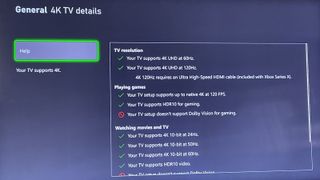
While the previous generation of consoles found themselves struggling to play catch-up in technical terms with the TV technology of the day, the PlayStation 5 and Xbox Series X – plus, of course, high-end PCs – have turned this situation on its head. Now it’s TVs that are having to work hard to keep up with all the latest lovely gaming graphics goodies.
Almost any TV you buy today will support 4K resolution. Many budget TVs, however, don’t support the 120Hz refresh rates required for 4K 120Hz gaming, topping out instead at 60Hz. With premium TVs, the most common issue when it comes to support for 4K 120Hz gaming relates to their HDMI ports.
Delve too deeply into HDMI issues and things can get very complicated very fast. So, keeping things as simple as possible, for a display to be able to receive a 4K 120Hz feed from a console it must have at least one HDMI capable of handling data rates of 32.08Gbps or more. That essentially means you are looking for TVs equipped with at least one HDMI port that supports the latest v2.1 HDMI specification, since the older (but still widely used) HDMI 2.0 spec only supports 18Gbps.
Unfortunately, a recent unhelpful move by the HDMI Licensing Administrator means that TVs that actually only have HDMI 2.0 ports can say they have HDMI 2.1 ports – so a gaming enthusiast’s TV-buying job is no longer as simple as just ensuring that a TV they’re interested in has an HDMI 2.1 port. You now need to check a TV’s small print for compatibility with 4K 120Hz gaming feeds. Of course, we are here to help with our best gaming TV recommendations.
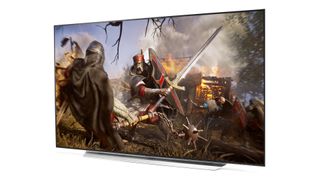
LG leads the way among TV brands when it comes to 4K 120Hz support. All four of the HDMI ports provided on its OLED models from the mid-range C series up have supported 4K 120Hz since 2019, making these TVs firm favourites with the gaming community. When it comes to LG’s current OLED TVs, its Z1 8K and C1 and G1 4K models all carry four 4K 120Hz-capable HDMIs, while its B1 models have two.
Some of LG’s LCD TVs offer plenty of 4K 120Hz support, too. The flagship QNED99 8K series, which uses Mini LED backlighting, carries four HDMI 2.1 ports, while the step-down QNED91 models have two HDMI 2.1 ports. LG’s Nano91 and Nano96 series, which use more standard LED lighting and LG’s Nanocell colour technology, carry two 4K 120Hz ports as well. As do the cheaper Nano88 and Nano86 models.
Samsung has also supported 4K 120Hz on its premium TVs for as long as LG – but it doesn’t typically provide as many 4K 120Hz-compatible HDMI ports. Especially on its 4K (rather than 8K) TVs. Ofter there is only one HDMI with sufficient bandwidth – though Samsung does at least put a joystick logo next to that port to help you identify it more easily during set up.
The Samsung situation is further complicated by the fact that TVs with the same core model number in different countries can carry different numbers of high-bandwidth HDMI 2.1 ports.
Looking at Samsung’s current European models, the QN95A, QN900A (8K), and QN800A (8K) all get four HDMI 2.1 ports, while the QN700A (8K), QN94A, QN90A, QN85A, and QN70A QLED models all get a single 4K 120Hz HDMI port.
Sony, Panasonic and Philips (well, the European Philips TV business owned by TP Vision, anyway) arrived relatively late to the 4K 120Hz party, only offering support for it on a limited range of models for the first time in 2021. All three are upping their gaming game for their 2022 TV ranges, though – and none of these brands muddy the waters with significant model differences between territories in the way that Samsung does. All three do follow Samsung in only supporting 4K 120Hz across one or two HDMI ports, though, rather than all of them.
Current Sony TVs with 4K 120Hz support are the Z9J 8K models (on two HDMIs), the A90J 4K OLEDs (on two HDMIs), the A80J/A84J 4K OLEDs (on two HDMIs), the X95J/X94J 4K LCDs (on two HDMIs), the X90J 4K LCD (on two HDMIs), and the X85J 4K LCDs (on two HDMIs).
Current Panasonic models with 4K 120Hz support are the the JZ2000 OLEDs (on two HDMIs), the JZ1500 OLEDs (on two HDMIs), the JZ1000 OLEDs (on two HDMIs), the JZ980 OLEDs (on two HDMIs), and the JX940 LCDs (on two HDMIs).
Current Philips models with 4K 120Hz support are the 65OLED+986 (on two HDMIs), the OLED+936 OLEDs (on two HDMIs), the OLED806 OLEDs (on two HDMIs), the PML9636 Mini LED TVs (on all four HDMIs), the PUS9206 LED TVs (on two HDMIs), the PML9506 Mini LED TVs (on two HDMIs),
It remains to be seen at this point how far ranging 4K 120Hz support is going to be in 2022 and beyond when it comes to more affordable models from price-conscious brands such as Hisense, TCL and Toshiba. At the recent CES, TCL and Hisense both suggested that they would be bringing cutting edge gaming support to lower price levels than we’ve seen before. But traditionally there are too many differences between those brands’ US and European ranges for us to be able to talk with certainty yet about specific models that might give gamers what they want.
Don’t forget AV receivers
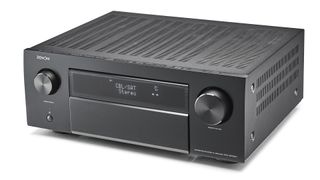
If a TV you already have or really want to buy only has a single high bandwidth HDMI 2.1 port when you ideally want two or three to accommodate all of your gaming gear, you could consider introducing an HDMI 2.1-capable AV Receiver/Amplifier into your system. Especially, of course, if you’re also keen on partnering your gaming with a surround sound audio system.
The first HDMI 2.1-toting AVRs from 2020 got off to a stuttering start by only carrying single HDMI 2.1 inputs that were also hit by a bug that prevented them from handling the maximum graphics output from Xbox Series X consoles. Now, though, there are bug-free models available – including reasonably affordable ones such as the £600 Denon AVR-X1700H – that carry multiple bug-free 4K 120Hz-capable HDMI 2.1 inputs, enabling people with only one 4K 120Hz HDMI port on their TVs to switch between gaming sources without having to keep manually swapping cables over.
Looking ahead

Now that 4K 120Hz gaming is so well and widely established, and given how much importance TV makers now place on attracting gamers, we should be able to look forward to 4K 120Hz support appearing on more HDMI ports on a growing number of TVs year on year. Including, crucially, on a wider range of more affordable TVs.
It’s likely to be a few years yet, though, before fans of cutting edge gaming don’t have to do at least a little careful 4K 120Hz research into any TV they want to buy.
MORE:
Still not sure which TV to buy? Here's our rundown of the best gaming TVs
We've also got a page dedicated to finding the best gaming TV deals
4K 120Hz isn't the only next-gen gaming spec to look out for, so also check out our explainers on VRR and ALLM.
Get the What Hi-Fi? Newsletter
The latest hi-fi, home cinema and tech news, reviews, buying advice and deals, direct to your inbox.
John Archer has written about TVs, projectors and other AV gear for, terrifyingly, nearly 30 years. Having started out with a brief but fun stint at Amiga Action magazine and then another brief, rather less fun stint working for Hansard in the Houses Of Parliament, he finally got into writing about AV kit properly at What Video and Home Cinema Choice magazines, eventually becoming Deputy Editor at the latter, before going freelance. As a freelancer John has covered AV technology for just about every tech magazine and website going, including Forbes, T3, TechRadar and Trusted Reviews. When not testing AV gear, John can usually be found gaming far more than is healthy for a middle-aged man, or at the gym trying and failing to make up for the amount of time he spends staring at screens.
